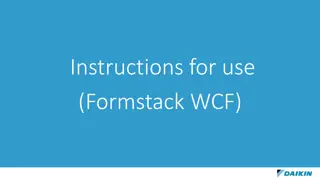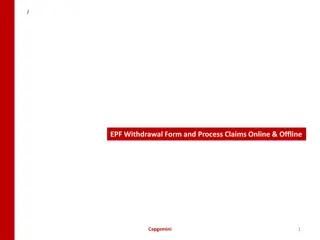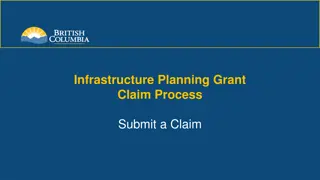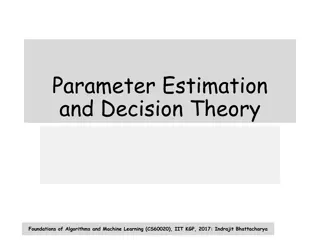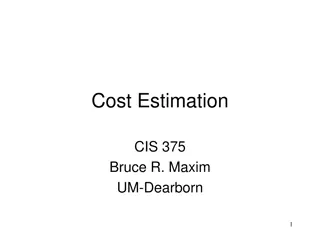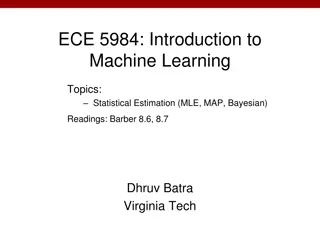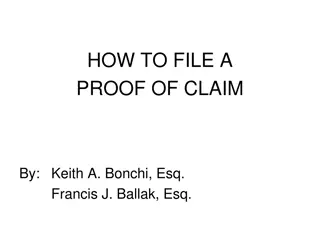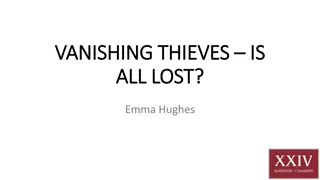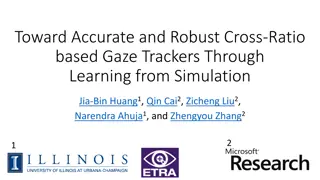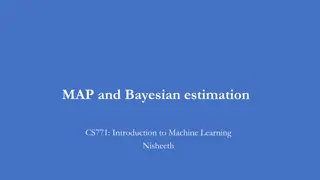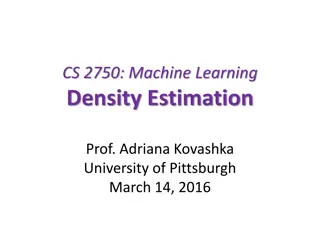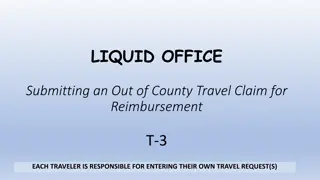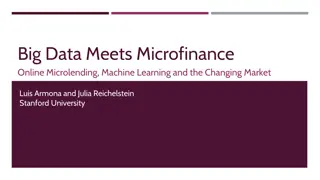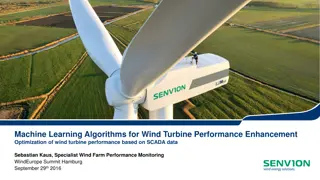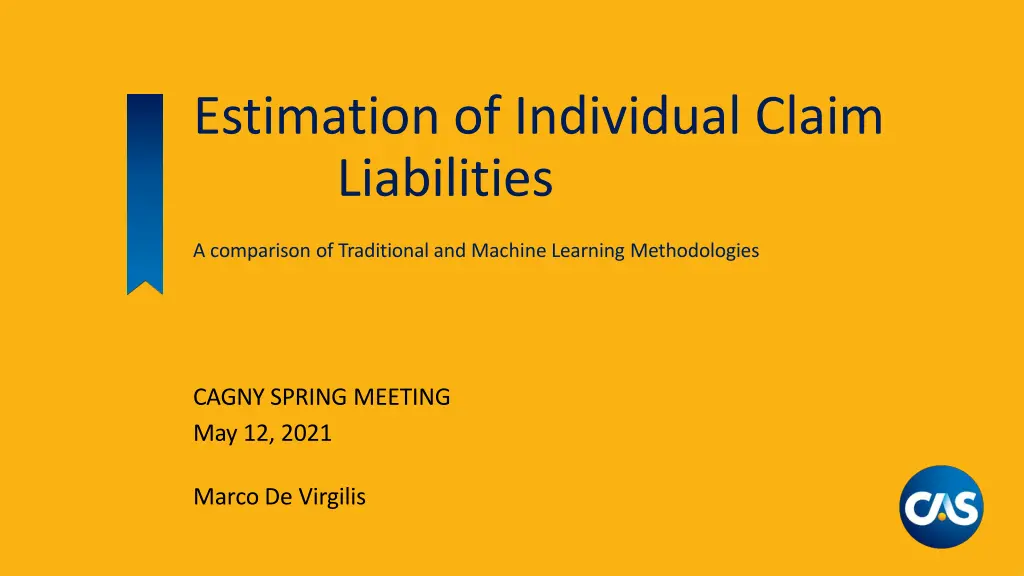
Comparison of Traditional vs. Machine Learning Claim Liabilities Estimation
"Explore the comparison between traditional and machine learning methodologies for estimating individual claim liabilities. Learn from industry experts at the CAGNY Spring Meeting about traditional claim reserving, machine learning applications, advantages, disadvantages of run-off triangles, and the benefits of individual claim reserving. Discover how leveraging data at the individual level can provide timely estimates and maximize data utilization in insurance. Keep up with the latest trends in actuarial science and data analytics."
Download Presentation

Please find below an Image/Link to download the presentation.
The content on the website is provided AS IS for your information and personal use only. It may not be sold, licensed, or shared on other websites without obtaining consent from the author. If you encounter any issues during the download, it is possible that the publisher has removed the file from their server.
You are allowed to download the files provided on this website for personal or commercial use, subject to the condition that they are used lawfully. All files are the property of their respective owners.
The content on the website is provided AS IS for your information and personal use only. It may not be sold, licensed, or shared on other websites without obtaining consent from the author.
E N D
Presentation Transcript
Estimation of Individual Claim Liabilities A comparison of Traditional and Machine Learning Methodologies CAGNY SPRING MEETING May 12, 2021 Marco De Virgilis
Presenters Marco De Virgilis, Senior Actuarial Data Scientist, Allstate
Agenda Traditional Claim Reserving Machine Learning in Claim Reserving Model Comparison
Run-Off Triangles: An Overview 0 1 2 3 4 5 6 7 8 9 1981 5,012 8,269 10,907 11,805 13,539 16,181 18,009 18,608 18,662 18,834 1982 106 4,285 5,396 10,666 13,782 15,599 15,496 16,169 16,704 1983 3,410 8,992 13,873 16,141 18,735 22,214 22,863 23,466 1984 5,655 11,555 15,766 21,266 23,425 26,083 27,067 1985 1,092 9,565 15,836 22,169 25,955 26,180 1986 1,513 6,445 11,702 12,935 15,852 1987 557 4,020 10,946 12,314 1988 1,351 6,947 13,112 1989 3,133 5,395 1990 2,063 LDF 2.999 1.624 1.271 1.172 1.113 1.042 1.033 1.017 1.009 1.000
Run-Off Triangles: An Overview AY Latest Ultimate IBNR Mack.S.E CV(IBNR) 1981 18,834 18,834 0 0 1982 16,704 16,858 154 143 0.928 1983 23,466 24,083 617 592 0.959 1984 27,067 28,703 1,636 713 0.436 1985 26,180 28,927 2,747 1,452 0.529 1986 15,852 19,501 3,649 1,995 0.547 1987 12,314 17,749 5,435 2,204 0.405 1988 13,112 24,019 10,907 5,354 0.491 1989 5,395 16,045 10,650 6,332 0.595 1990 2,063 18,402 16,339 24,566 1.503
Run-Off Triangles: Advantages and Disadvantages Advantages: Easy Implementation Stabilizes Experience Intuitive and Interpretable Disadvantages: Information compression, e.g. 10 years worth of data to 55 data points Unreliable recent results Loss of information
Individual Claim Reserving Looking at claim data at the individual level can overcome the main drawback of standard triangle techniques, bringing these advantages: Timely Estimates: There is no need to wait for each AY year to sufficiently develop Extensive Use of Data: Data is usually recorded anyway, it would be clever to actually use it.
Predicting Ultimate Cost Target: To predict the ultimate cost of the claims when they are initially reported. At this stage, there is no paid amount and an initial case reserve is established. In one case they will be settled and paid. This is the amount that needs to be estimated. On the other hand, claims could be closed with no payment (CNP), and therefore there will not be any payment.
Predicting Ultimate Costs We will have three stacked models: First, each claim will be classified if it will be paid or closed with no payment. If the claim will be paid, a second model will estimate the final claim amount, ie. ultimate cost. A third model will also estimate the timing of such payment.
Modeling Framework The framework is built on one classifier and two regressors. Regression Amount Paid Regression Lag Classification Claim Amount = 0 CNP
Data example Acc_Dat e Rep_Dat e Car_Ma n Acc_Tim e Case Res Lat Long DUI BAC ... Ultimate Cost Time Lag
Models Implemented The following models have been implemented: General Additive Models, GAM Multivariate Regression Splines, MARS K Nearest Neighbor, KNN Gradient Boosting, GB Neural Networks, NN Each different model has been used to classify claims and to predict both ultimate cost and lags. Then, the performance have been compared and the best performing models have been chosen.
RBNS Results (Reported + IBNER) Classification Performance:
RBNS Results (Reported + IBNER) Regression Performance:
RBNS Results (Reported + IBNER) Regression Performance:
IBNYR Estimates At this point we have obtained estimates for claims that have been reported to the company. This includes RBNS (Reported but not settled) and IBNER (Incurred but not enough reported). We still have to produce estimates for IBNYR, (Incurred but not yet reported). Since the company does not have any records of these claims we have to follow a different approach.
IBNYR Estimates Let s consider that the evaluation date is December 31, N. 1. Take the observed ultimate value of all the claims occurred in all the previous years and reported by year end (RBNS + IBNER). 2. Take the observed ultimate value of all the claims occurred in all the previous years and reported after year end (IBNYR). 3. Computing the ratios of these quantities, IBNYR/(RBNS + IBNER), we can have a time series for all previous AY s. 4. After estimating a value for year N, multiply this estimate by the level of ultimate amounts already predicted. 5. This will lead to an estimate of IBNYR.
Conclusions Results have a high level of accuracy. No reliance on individual point estimates. Early evaluation Allows early decisions from management Future studies could explore the possibilities of predicting individual claim development.
Final Remarks We showed the potential of ML in estimation of policyholders liabilities. It s not a one-fits-all recipe but it gives a framework of actions. Recent advances in computer power have allowed more extensive use of data in a wide variety of areas. We believe that it is very beneficial to explore these capabilities in the context of actuarial science.
Thank you for your attention Further information available at De Virgilis, M., Pierluigi C., Estimation of Individual Claim Liabilities. Casualty Actuarial Society, 2020. https://www.casact.org/research/wp/papers/working- paper-Virgilis-Cerqueti-2020-01.pdf
Contacts: Marco De Virgilis: devirgilis.marco@gmail.com
Casualty Actuarial Society 4350 North Fairfax Drive, Suite 250 Arlington, Virginia 22203 www.casact.org

